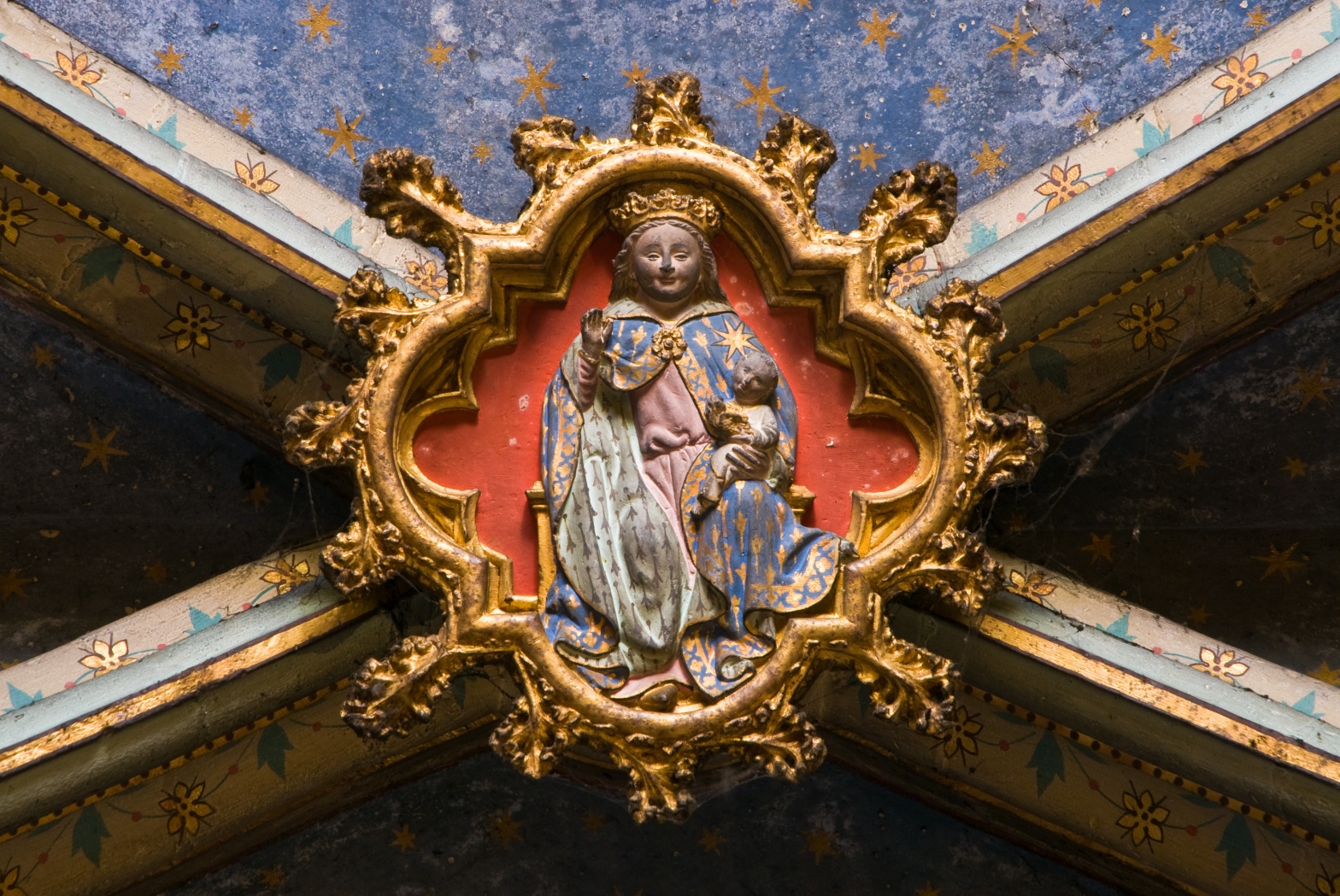“thou art Peter, and upon this rock I will build my church”
— Matthew 16:18
“This gate shall be shut, it shall not be opened, and no man shall pass through it, because the Lord the God of Israel hath entered in by it, and it shall be shut for the prince. The prince himself shall sit in it, to eat bread before the Lord: he shall enter in by the way of the porch of the gate, and shall go out by the same way.”
— Ezekiel 44:2
“The stone which the builders rejected; the same is become the head of the corner (the keystone)”
— Psalm 118:22

In Christian symbolism of building, Saint Peter corresponds to the foundation stone, the Holy Virgin Mary to the pendant hanging from the keystone, and Christ to the keystone (or angular (corner) stone (lithon gonias, ‘gonias’ meaning both angular and hidden (unmanifested)).

Let us start with analysing the meaning of “foundation stone”. The most obvious is Peter being the foundation of the Church, not as an individual but as a function, which explains the authority of the Seat of St Peter. But “Foundation Stone” is also the name of the place where the Holy of Holies was situated, and beneath which is the Well of Souls. And this is what the Zohar says of it:
“The world was not created until God took a stone called the Foundation Stone and threw it into the depths where it was fixed from above till below, and from it the world expanded. It is the centre point of the world and on this spot stood the Holy of Holies“
And this is what the Midrash Tanhuma says of it:
“As the navel is set in the centre of the human body, so is the land of Israel the navel of the world… situated in the centre of the world, and Jerusalem in the centre of the land of Israel, and the sanctuary in the centre of Jerusalem, and the holy place in the centre of the sanctuary, and the ark in the centre of the holy place, and the Foundation Stone before the holy place, because from it the world was founded.”
So we can say that the Foundation Stone is not only that on which the Church is built, but also that on which the cosmos is built (for the church is an image of the cosmos). But avoid the common confusion of believing that Christ is this stone, for Scripture is clear that He is not that, but He is the Cornerstone (this leaves aside the question of ‘substitution’, i.e. Peter fulfilling the function of Christ on earth, which is also probably connected with the upside down crucifixion of the first Pope (‘vicar’ meaning ‘substitute’)). We will come back to the topic of the relation between the Cornerstone and Foundation Stone after discussing the other two, namely the Keystone and Pendant, i.e Christ and Mary.

Let us then discuss the Keystone. First we must dispel the idea that “corner stone” refers to a stone in one of the (multiple) corners of a church building, for this would make no sense. It is clear that it refers to the ‘angular stone’, i.e. the stone that is the top of the arch. With that out of the way, let us see the symbolism of it. The Keystone is the most important part of the building, for it is the stone that unites the entire building in one, and keeps it from crumbling. Now, the keystone has a peculiar shape, which prevents it from functioning anywhere else in the building except for at the top. This is the reason why a builder who does not look above and beyond can not understand the function of this stone, and why he would ‘reject it’, instead of saving it for the end. For a wise builder orients the entire process of building to its end (and completion), and the end is precisely the placing of the keystone. Here we see that the keystone is the ‘last stone’, while the foundation stone is the ‘first stone’ (recall ” So shall the last be first, and the first last”). And this keystone is nothing other than the stone of the philosophers.

But the capstone is still hidden (recall ‘gonias’ also meaning ‘secret’), and for the world (i.e. the cathedral (as the cathedral is an image of the cosmos)) to see the keystone, it needs to be lowered and made visible. This place is often reserved for the Pendant, which makes it protrude from the vault and gives and indication of the Axis Mundi which passes from the Keystone down to the Foundation Stone.

And this Pendant is the Gate of Heaven, through which the King of Israel enters into the world, and also leaves by it. From this it is obvious that the Pendant is the Virgin Mary, whose symbolism we have analysed in this blogpost. For by this Gate God entered into the world, so that men may go out of the world and into the Kingdom of Heaven. And so the “lithon gonias”, the hidden stone, is made manifest by the Virgin.

Now that we have understood the general symbolism of the three, namely the Keystone, the Pendant, and the Foundation Stone, i.e. the Christ, the Virgin, and Saint Peter, we may come back to their union and relationship. For we can easily imagine a (virtual) vertical line between the three. This would then be the Axis Mundi, or World Tree, which stretches from the Top of the World (Heaven, the Keystone) to the Bottom of the World (Earth, the Foundation Stone). And it is along this ladder that the Angels go up and down, that the Grace of God is bestowed, and that men are saved.
So in summary, the Keystone is Christ, the Pendant Mary, the Foundation Stone Peter, and between them is the Axis Mundi.
Go visit a church and see.
